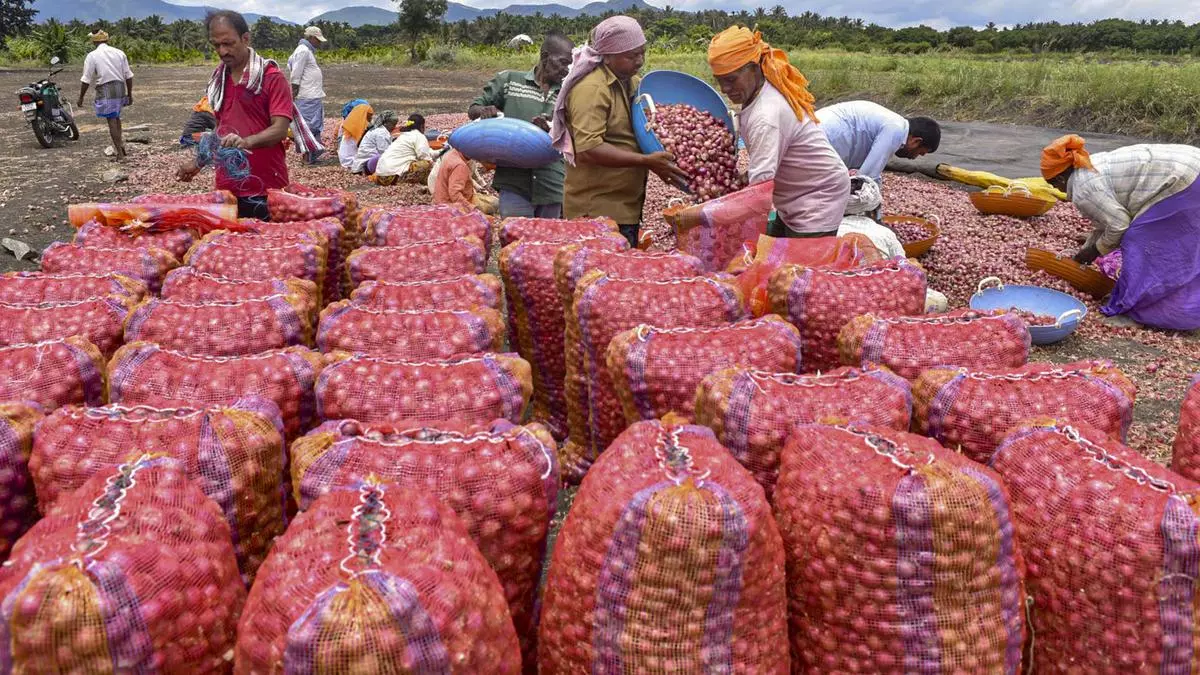Indian government scraps $550/tonne onion export floor price
The Indian government on Friday relaxed the curbs on onion exports by scrapping the $550 a tonne minimum export price. It, however, will continue to impose a 40 per cent export duty on the staple vegetable.
A notification issued by the Directorate-General of Foreign Trade (DGFT) said, “The minimum export price (MEP) condition on (the) export of onions is removed with immediate effect and until further orders.”
The decision follows a meeting of the Cabinet Committee on Prices headed by Home and Cooperation Minister Amit Shah on Wednesday. The exporting community was expecting a decision on onion exports as Nitin Gadkari, Union Minister of Road Transport and Highways, was also invited.Besides onion, the issue of curbs on rice and sugar exports besides ethanol also reportedly figured at the meeting.
El Nino impact
The government had initially banned exports of onions in December 2023 after the kharif onion last year was affected by drought and prolonged dry period due to El Nino in growing regions, particularly in Maharashtra. However, the ban was removed on May 5 this year. But the government imposed a 40 per cent export duty besides fixing $550/tonne MEP.
The Minister of Agriculture and Farmers’ Welfare, in its second advanced estimate, pegged onion production during 2023-24 at 24.22 million tonnes (mt) against 30.20 mt in 2022-23. The 6 mt lower production resulted in prices soaring at retail outlets, forcing the government to ban exports to rein in prices.
Political issue
One reason for the Indian government to act with alacrity on the onion price is that the bulb vegetable is politically sensitive and has in the past led to the downfall of governments. However, the export ban and the MEP cost the Bharatiya Janata Party and its National Democratic Alliance quite a few seats in Maharashtra and other growing regions.
The current decision is seen as a move ahead of the Assembly polls scheduled in Maharashtra later this year. According to trade sources, the government has yet to clarify on the 40 per cent duty. They expect another notification soon to either remove it or lower it to about 20 per cent.
Positive move
M Madan Prakash, President of the Agricultural Commodities Exporters Association, told businessline that the removal of the MEP has come at the right time ahead of kharif onion arrivals. “This will help farmers to fetch better prices,” he said.
However, Indian onion is not competitive in the global market given higher domestic prices. Currently, the modal price (the rate at which most trades take place) at Lasalgaon in Maharastra’s Nashik district is ₹4,100 a quintal — a nine-year high at this point in time. During the same time in 2015, the modal price was ₹4,750 a quintal.
Kharif onion has begun to arrive in Kurnool in Andhra Pradesh and northern Karnataka. In Maharashtra, kharif onion arrivals are expected by the end of October. According to Crop Watch Weather Group data, kharif onion has been planted on 2.90 lakh hectares (lh) as of August 29 against 1.94 lh during the same period a year ago. The sowing has exceeded the total kharif acreage of 2.85 lh a year ago.
